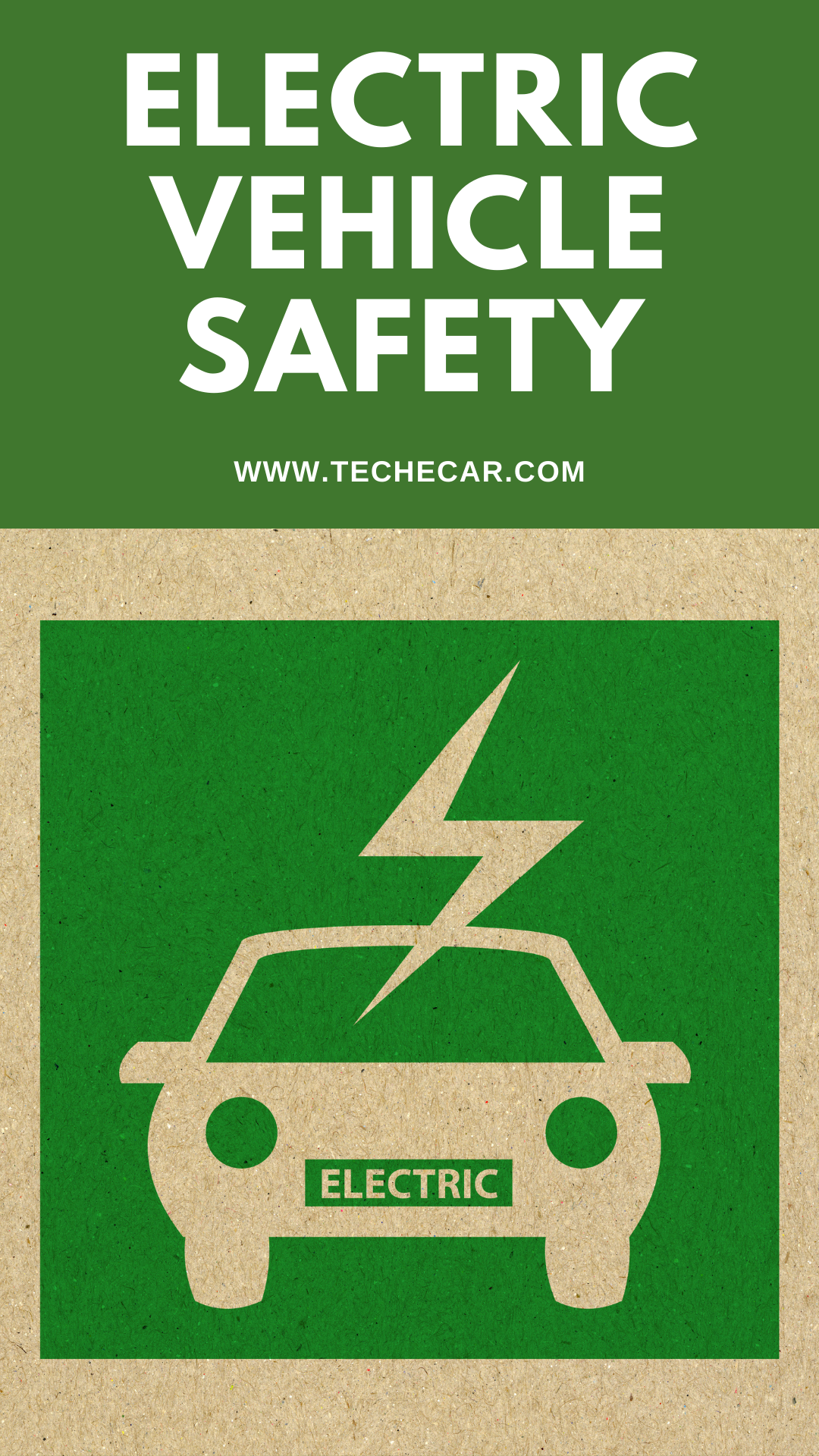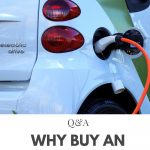Electric Vehicle Safety
Topic: Electric Vehicle Safety


Electric Vehicle Safety
Hybrid and plug-in electric vehicle upkeep and safety
Maintenance demands and safety standards for hybrid electric vehicles (HEVs) and plug-in hybrid vehicles (PHEVs) are similar to conventional vehicles. In contrast, all-electric vehicles (EVs) require less maintenance. Manufacturers develop these cars and produce manuals with maintenance and safety in mind.
Maintenance Comparison
PEV and HEV maintenance is similar to conventional vehicles due to the internal combustion engines. The electrical system (battery, motor, and related electronics) normally requires minimal periodic maintenance, and brake systems generally last longer than traditional vehicles because of regenerative braking.
In general, electric vehicles require less upkeep than traditional automobiles because:
- The battery, motor, and accompanying electronics require minimal to no regular maintenance.
- Fewer fluids, such as engine oil, must be maintained regularly.
- Regenerative braking reduces brake wear substantially.
- Compared to a traditional gasoline engine, the number of moving parts is drastically reduced.
Battery Maintenance
The sophisticated batteries used in these cars have a limited number of charging cycles (the number of times the battery can be charged and drained, sometimes termed “cycle life”) (the”Cycle life” refers to the number of times a battery can be charged and drained.
Battery life and warranties should be confirmed with the retailer, and the manufacturer’s policy on battery recycling should be taken into account. Some vehicle battery systems employ liquid coolant to maintain safe operating temperatures.
They may need to be checked frequently. Ask your dealer or refer to your owner’s handbook for further information.
The batteries in electric-drive vehicles are normally intended to endure for the projected lifetime of the vehicle. The advanced batteries in plug-in electric vehicles (PEVs) are built for long life, but they will ultimately wear out, just like the engines in conventional vehicles.
Despite the lack of detailed data on PEV battery failures, numerous manufacturers provide guarantees on their PEV batteries of up to eight years and 100,000 miles.
Manufacturers rarely disclose battery replacement costs, but if one is required after the manufacturer’s warranty has expired, a large out-of-pocket charge might be expected. However, as technology advances and production volumes rise, battery prices should decrease.
Safety Requirements
Commercially available electric-drive vehicles must fulfil the Federal Motor Vehicle Safety Standards and undergo the same rigorous safety testing as conventional vehicles marketed in the United States.
On the other hand, local electric cars are exempt from these requirements because they are restricted to low-speed roads by state and local rules.
Electrical systems in HEVs, PHEVs, and EVs typically range from 100 to 600 volts in voltage.
To ensure the safety of their batteries, they put them through a series of tests that include being exposed to extreme temperatures, vibrations, short circuits, humidity, and a variety of other hazards, such as collisions and submersion in water.
Manufacturers create these vehicles with insulated high-voltage cables and safety mechanisms that shut the electrical system when they detect a collision or short circuit. EVs tend to have a lower centre of gravity than traditional vehicles, making them more stable and less likely to flip over.
Emergency Response and Training
Emergency response for electric-drive vehicles is not considerably different from conventional vehicles. All high-voltage electrical cables in electric-drive vehicles are readily identified with orange paint, and cutoff switches are built into the vehicles to disconnect the battery and disable the electric system.
Electric Vehicle Safety
Insights into the subject of e-car safety
Many potential EV users are put off by range anxiety, but a number also worry about safety. It’s easy to see how these devices could be a source of concern, what with their high voltage electrical systems and their usage of very flammable batteries.
In reality, however, electric vehicles are just as safe as any other, thanks to various innovative safety systems designed to safeguard passengers and other road users. Here’s a complete EV safety handbook.
Are electric cars safe in an accident?
First off, it’s vital to remember that all-electric cars are manufactured to follow the same strict design and manufacturing rules as their petrol and diesel equivalents. Most of the time is spent making sure the machines are as secure as possible, which is why they go through the same process.
Additionally, most European automakers submit their electric vehicle offers to the Euro NCAP test, which finds that the vast majority perform comparable internal combustion cars of similar size and equipment.
Strong constructions, broad crumple zones and several airbags guarantee that occupants areas are as adequately protected as possible in the case of an accident.
In fact, with the added heft of their battery packs and the need to absorb the increased energy they create in a collision, it’s arguable that EV designers have to work even harder to accomplish outstanding crashworthiness.
One area of concern, though, is fire. A sequence of high-profile EV accidents resulting in car fires a few years ago made new car purchasers cautious.
Now, you may imagine fire is more likely in internal combustion (isn’t the answer in the name?) automobile, particularly one fuelled by a substance as flammable as petrol. Still, an EV is just as likely (or unlikely as we’ll find out) to suffer from a conflagration following a collision.
Should the worst happen, the largest possible problem with an EV’s lithium-ion battery is something known as a thermal runaway? Essentially, suppose one of the cells gets broken and short-circuits.
In that case, there’s a potential the flammable electrolyte within will ignite, becoming hotter and hotter as it consumes up all the stored energy, blazing more than 1,000 degrees Celsius.
An ever-increasingly furious fire may break out if this rising heat affects nearby cells, and you will have to wait for it to effectively ‘burn out’ on its own if this damages hundred or thousands of cells.
Even though it sounds terrible, the latest generation of electric vehicles is specifically designed to prevent this scenario. For starters, the battery is very well protected in a crash-resistant construction that’s situated as low in the automobile as feasible and as far away from potential impact regions.
For example, two deformable aluminium structures have been built into the front bulkhead of the Polestar 2 model. SPOC (severe partial offset crash) blocks prevent the front wheels from touching the battery during a frontal accident.
Phase-change materials surround the cells, helping them absorb heat and reducing the chance of neighbouring cells overheating.
With such high voltage electrical systems, EVs also require particular safeguards to guarantee the occupants and responding emergency personnel aren’t shocked in the aftermath of an accident. Many electric cars operate at 400 volts, but Porsche was the first to launch an 800-volt set-up. Any touch with faulty cabling could be lethal at these voltages.
Fortunately, EVs feature safety devices that instantly disconnect the battery in the event of a crash. When the car’s many sensors conclude a collision has taken place, special pyro-fuses have fired that cut the high voltage lines, essentially disconnecting all the electricity. In addition, Bosch, a German vehicle parts manufacturer, has created an airbag deployment device that drives a small wedge into the cable.
Generator of engine noise
Of course, it’s not just the occupants of EVs that have safety concerns — some numerous pedestrians and cyclists are scared. We’re taught to stop, look, and listen when crossing the street, yet the last of these acts is the most difficult to accomplish with near-silent electric automobiles.
This is particularly true in urban areas, where speeds aren’t high enough for the regular tyre roar to be a giveaway. A study conducted in 2015 found that EVs had a 40% higher risk of colliding with pedestrians.
All new electric vehicles sold in Europe must now be equipped with an electronic noise emitter as of July 1, 2019. A car’s front and rear bumpers often have two sound-generating devices positioned behind them that produce sound at a frequency and speed similar to an internal combustion engine. When parking, it emits a low whine that is particularly noticeable.
In the rain, can you charge an electric car?
It’s a sensible enough query. Considering that water and electricity are incompatible, it stands to reason that hooking up high-voltage electrical equipment while it is raining is doomed to failure. Fortunately, the truth isn’t nearly as surprising.
For starters, the electrical charging plug and the socket in the automobile are carefully constructed to ensure very little infiltration of water or dirt particles while charging stations themselves are weather-proofed. To make matters worse, no power is delivered to the automobile until a series of tests have been completed, including a look to see whether any of its connections have water in them. In short, you can plug in with confidence regardless of the weather.
Electric Cars: A Small Opening for Security and Safety: A Big Study Area
Since EVs don’t use a combustible fuel like gasoline or diesel, the risk of a fire in an EV may be lower than in an ICV; Even if lithium-ion battery electric vehicles (LIB) are thought to be safer because of the absence of internal combustion engines (ICEs), this is based on an incomplete understanding of the battery chemistry and fire science, as well as a partial view of the bigger picture.
EVs indeed have evident advantages concerning safety, as they do not carry conventional fuels on board, which are explosive and hazardous. Using combustible liquid fuels without a combustion engine eliminates the possibility of a fire or explosion.
Even though this may seem like common sense, it is crucial to examine the LIB battery’s chemistry and physical properties under various conditions.
LIBs – the main battery chemistry powering EVs due to their high energy and power densities, battery durability, and greater driving range – comprise extremely energetic reactive components and flammable organic electrolytes.
This generates many safety challenges not found in conventional vehicles and introduces dangers that need to be acknowledged and managed. In 2016, the Samsung Galaxy Note 7 phone and Hoverboards were recalled due to safety concerns, both of which were traced back to LIBs.
To start a fire, you need all three components of the fire triangle in a LIB cell: heat/ignition, oxygen, and combustible material. It has a very narrow operating temperature range.
If the cell warms up through quick-charging, overcharging, short-circuiting, or mechanical deformation such as impact or external heating, the lithium-ion system is designed to expel gas to prevent a cell explosion.
Thermal runaway, a rapid rise in the battery’s internal temperature that continuously initiates a range of breakdown and other associated exothermic, electrochemical events, can occur if the temperature rises above 150°C – 200°C.
With increasing temperatures, this reaction’s rates of energy release cause leakage of the battery electrolyte and other explosive components after the battery confinement have ruptured, resulting in heat generation, rapid gas and smoke formation, cell breakage, a fire, rapid disassembly, and in the worst case, a gas explosion.
Is it safe to drive an electric car?
The number of electric vehicles (EVs) on the road is expected to rise in the coming years as battery technology improves and costs decrease. Many manufacturers, including Tesla, BAIC, BMW, Volkswagen, BYD, Hyundai, Mitsubishi and Renault-Nissan, offer various EV models, with a choice of body styles and pricing.
However, the recent explosions of two Tesla Model S in Hongkong and Shanghai, an NIO ES8 at a residential plot in Wuhan City, China, a Tesla Model 3 on a highway in Moscow and a Hyundai Kona in the owner’s garage in Montreal, Canada, have created doubts among car buyers about the safety of electric cars.
The risk of a fire breaking out in an electric vehicle is lower than in a vehicle powered by an internal combustion engine (ICE). According to the Fatality Analysis Reporting System, the fire was found in 2.6 per cent of EVs and 4.4 per cent of ICE vehicles in cases of fatal vehicle crashes.
In the United States, a database of 60,000 annual crashes was used to examine these incidents from 1993 to 2013. This blog outlines why EVs catch fire and looks at steps being taken by automakers to make EVs safer.
Overwhelmed by the number of charging requirements:
The CHAdeMO, Combined Charging System (CCS), Tesla Supercharger, and Guobiao (GB/T) standards are all used by EV chargers. It is also more likely that differing charging standards will cause issues with supplying varying power and voltage to infrastructure builders for charging.
A common global charging standard can go a long way to alleviate this issue. In 2017, Infineon and STMicroelectronics joined Charging Interface Initiative e.V. to build a universal charging standard.
Batteries can be damaged by overcharging or overheating:
The lower flammability of Li-ion batteries in electric vehicles makes them safer than ICE vehicles. However, liquid electrolytes in battery cells can overheat with prolonged exposure to malfunctioning voltage regulators, alternators, or chargers’ wrong usage.
A fire can break out due to thermal runaway. Charging EVs built for slow charging with rapid chargers can harm battery pack charging connectors and weaken the battery’s integrity even more than normal.
Small yet recurring maintenance is required for electric vehicles:
Periodic maintenance is required for the electric vehicle’s electrical systems, including the battery, electric motor, and other electronic components. Even if EVs require less maintenance than ICE vehicles, disregarding the necessity for servicing can lead to impaired safety.
Automakers should take more precautions in the design of batteries and electrical harnesses:
NIO, a Chinese EV start-up, recalled almost 5,000 ES8 electric SUVs made between 02/04/2018 and 19/10/2018 for fire catching risk. After discovering moisture seeping into the battery cells, Audi voluntarily recalled over 560 e-Tron cars in the US in June of this year.
Automakers should continue to examine potential difficulties with battery design, high voltage wiring harness, battery cases, waterproofing, charging, and temperature control.
EV automakers have adopted the following additional safety measures:
- Most automakers have switched to liquid cooling technology to maintain a safe operating temperature for the battery while the automobile is in use.
- Tesla uses an extra aluminium plate for fire safety between the battery pack and passenger compartment. This is not obligatory or standard yet with electric vehicles.
- Several well-known manufacturers are putting money into developing next-generation solid-state battery technology to make the batteries they use safer.
Even though electric vehicles produce less pollution and cost less to operate, the innovations that go along with them also bring new issues.
The collective efforts of automakers, component suppliers, battery suppliers and regulatory authorities will help make electric vehicles safer and support the shift towards electric transportation. SOURCE
Electric cars are more secure than conventional vehicles for the following reasons:
Flammability of Electric vehicles
In 2013, three vehicle fires involving Tesla’s Model S took over the news cycle, drawing sharp criticism from commentators and the general populace alike, who argued that electric vehicles were flammable and unsafe.
Despite Tesla being quick to point out that all of the fires included some form of accident, its stock suffered a huge knock as the anxiety over EVs deepened.
Lithium-ion batteries (also known as Li-ion batteries) power electric vehicles and are, thus, combustible. When exposed for lengthy periods to the improper sort of conditions or if the power cells are broken, and short-circuiting happens, there’s potential for combustion. This is referred to as thermal runaway.
But the likelihood of such a thing occurring is exceedingly tiny. There are presently millions of Li-ion battery-fuelled items (including laptops and phones) on the market, yet the causes of fires are rare and far between.
A researcher at Dalhousie University, Jeff Dahn, has conducted research indicating that only one fire occurs when handled properly for every 100 million Li-ion batteries sold.
Some may be surprised to learn that Li-ion batteries are less likely than gasoline to catch fire or explode. It was necessary to contain the flames until they were extinguished in circumstances where the former had been damaged or had started fires.
When the latter set off fires, the ensuing conflagration quickly spread to other areas of the car.
However, none of this means that EV engineers and designers have ignored the worries about a thermal runaway. A protective cooling layer, akin to that found in typical automobile radiators, has been added to batteries to increase their safety.
If the batteries somehow manage to overheat despite the increased cooling, they have been arranged as an assortment rather than as one giant pack and are further segregated by firewalls.
Collisions
Despite the Tesla Model S’s unjust criticism over concerns about flammability, the NHTSA (National Highway Traffic Safety Administration) gave it the highest possible safety rating in crash tests because of the external aluminium plating surrounding its battery array and the additional layer of fire protection between its batteries and passengers.
While the Tesla Model S presently has more fire safety features than most other electric vehicles, many other models scored passenger safety equally. As a result of the Model S’s popularity, there has been a push to improve the fire safety of all-electric vehicles (EVs).
The NHTSA found that people in electric vehicle crashes were less likely to be injured than those in crashes involving vehicles powered by gasoline or diesel engines. Simply, electric cars are safer than other solutions.
Pedestrian accidents
According to multiple studies, electric vehicles (EVs) are more likely than conventional vehicles to be involved in collisions with pedestrians.
This is because EVs are significantly quieter than their exclusively gas-powered counterparts and potentially represent a threat to people out walking their dogs or those with disabilities, such as the blind.
Low-speed zones are particularly hazardous because an EV’s tyres don’t create enough friction with the road to make much noise when travelling at a slower pace.
While the U.S. and Europe have already mandated that all new electric vehicles be equipped with a noise emitting device, Canada is currently working to amend the Canada Motor Vehicle Safety Standard to require the same.
A device positioned behind the front, and back bumpers will provide sound at a frequency similar to that of internal combustion engines, effectively eliminating the risk of an accident due to lack of noise.
People Also Ask:
Are electric cars safe in accidents?
The NHTSA found that people in electric vehicle crashes were less likely to be injured than those in crashes involving vehicles powered by gasoline or diesel engines. Electric cars are safer than other solutions.
What are the safety issues for working on an electric vehicle?
In hybrid and electric vehicle repair, the biggest concerns are electrocution and the potential for the car to start accidentally while work is being done. This is why safety training is so important.
Are electric cars safe for passengers?
Overall, the NHTSA found that crashes involving electric vehicles are less likely to result in passenger injuries than crashes involving vehicles powered by gasoline or diesel engines, indicating that passengers are safer in electric vehicle crashes.
Electric vehicle safety for emergency responders:
- The NHTSA found that people in electric vehicle crashes were less likely to be injured than those in crashes involving vehicles powered by gasoline or diesel engines. Electric cars are safer than other solutions.
- In hybrid and electric vehicle repair, the biggest concerns are electrocution and the potential for the car to start accidentally while work is being done. This is why safety training is so important.
- Overall, the NHTSA found that crashes involving electric vehicles are less likely to result in passenger injuries than crashes involving vehicles powered by gasoline or diesel engines, indicating that passengers are safer in electric vehicle crashes.
- On-going projects and related initiatives of the U.S. federal government are fostering the proliferation of the next generation of electric vehicles. As a result, the production and use of electric vehicles are picking up speed. An essential concern for introducing this new technology is the potential risks that may ensue and how the emergency response community will manage and minimise those threats.
- As part of this initiative, firefighters and other emergency responders will receive extensive training and awareness on sophisticated electric drive vehicles, such as battery-electric, hybrid electric, and certain fuel-cell electric cars.
- Training in emergency response tactics and public awareness will also be improved as part of the project and create a single repository for nationwide technology transfer. This project report (in 3 parts owing to enormous file size) presents a compilation of material that documents the efforts performed to fulfil these objectives.
Electric vehicle charging safety guidelines.
There will be an increasing demand for charging and safety infrastructure as the number of electric vehicles on the road grows. We have established guidelines to guarantee electric vehicle supply equipment (EVSE) is fitted safely and in conformity with legislation.
Electric vehicle safety features.
- Adaptive Cruise Control.
- Blind-spot Monitoring with Rear Cross-Traffic Alert.
- With Emergency Braking and Forward-Collision Warning, you can stay safe.
- Lane-Departure Warning.
- Lane-Keeping Assist.
- Assistance with maintaining a straight path in traffic.
- 360-degree Surround Camera System.
- High Beams that Turn On on Their Own.
Hybrid electric vehicle safety procedures.
Maintain a “safety zone” around their work, including utilising yellow caution tape and “DO NOT TOUCH “HIGH-VOLTAGE” signs when high-voltage system repairs are to be left unattended. 1. Do NOT handle high-voltage wiring, connectors, or parts, such as the inverter or the hybrid battery assembly.
Electric vehicles represent a full different technology compared with internal combustion engines. This indicates that new safety hazards, especially related to the characteristics of high-power electric equipment, may be present.
We urge you always consult your owner’s manual for precise advice on “vehicle storage” for longer than 30 days. 4. If you’re keeping your battery electric vehicle without plugging it in, it is advisable to keep it at a level of charge between 10 per cent and 80 per cent.
Electric vehicle safety tools.
According to McGinn, you should only utilise recertified equipment and wear PPE (aprons, boots, gloves, etc.) that meets the voltage range and rating you’re handling. According to McGinn, if you’re looking for rubber gloves, look for a pair designated Class 0 rather than 00 or 1.
Recommended Articles:
Stealth Night Hawk Electric Vehicle





